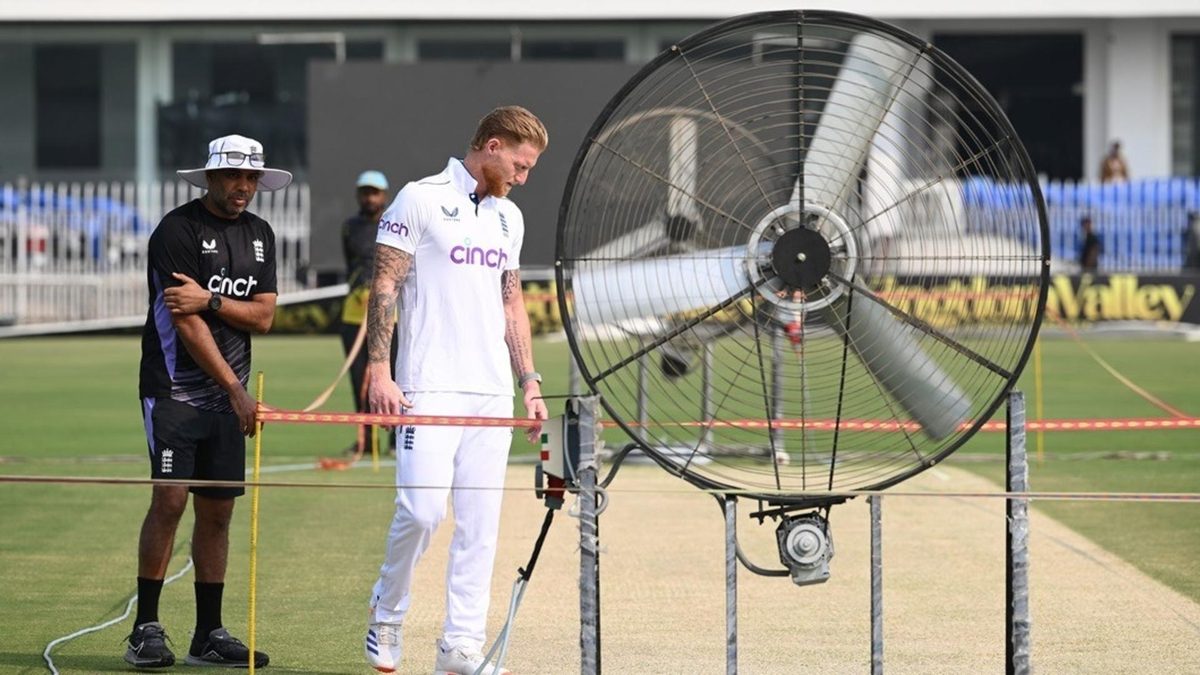
The first session of the third Test between Pakistan and England, at the Rawalpindi Cricket Stadium, raised questions over the pitch.
With the series level 1-1, England reached 56-1 before becoming 110-5 after 30 overs at lunch on day one after Ben Stokes won the toss and opted to bat in the decider, at Rawalpindi.
England’s collapse was largely due to the pitch, where Pakistan opened the bowling with off-spinner Sajid Khan and left-arm finger-spinner Noman Ali – the first time two spinners started a Test match in Pakistan – and kept them on throughout the session. Sajid had 3-55 in the session and Noman 2-53.
At least two of the five wickets – Ben Duckett’s and Joe Root’s – were not characteristic of the first session of a Test match, and can be attributed to the pitch. These raise an obvious question: is the Rawalpindi pitch likely to receive an ICC sanction?
How are the ICC likely to rate the Rawalpindi pitch?
“The objective of a Test pitch shall be to allow all the individual skills of the game to be demonstrated by the players at various stages of the match,” mention the ICC playing conditions. ”If anything, the balance of the contest between bat and ball in a Test match should slightly favour the bowling team.”
Vague, perhaps, but the conditions add that “a pitch should be expected to deteriorate as the match progresses, and consequently, the bounce could become more inconsistent, and the ball could deviate more (seam and spin) off the wearing surface.”
According to the same conditions, a pitch can be deemed “Unsatisfactory” if it “does not allow an even contest between bat and ball”. A pitch can do this “either by favouring the batters too much, with minimal wicket-taking opportunities for both seam and spin”, or “by favouring the bowlers too much, with too many wicket-taking opportunities for either seam or spin.” In that case, it will get one demerit point.
A pitch can also be classified as “Unfit” if it is “dangerous”, in which case it get three demerit points. How are these determined?
Of the conditions, the ones relevant to the Rawalpindi pitch read: “It is acceptable for a pitch to offer some degree of turn on the first day of a match, particularly in the sub-continent, though anything more than occasional unevenness of bounce at this stage of the match is not acceptable. It is to be expected that a pitch will turn steadily more as a match progresses, and it is recognised that a greater degree of unevenness of bounce may develop.
“It is impossible to quantify the amount that a ball is ‘allowed’ to turn as bowlers will turn the ball differing amounts. The type and identity of bowler shall be taken into account when assessing this factor.”
The ball that got Duckett virtually stayed along the ground – in cricketing parlance, a pea-shooter. The bounce has varied throughout the first session. The match referee will almost certainly have a close look while evaluating the pitch. However, even if there are demerit points, it is likely to be one point, not three.
Follow Wisden for all cricket updates, including live scores, match stats, quizzes and more. Stay up to date with the latest cricket news, player updates, team standings, match highlights, video analysis and live match odds.








